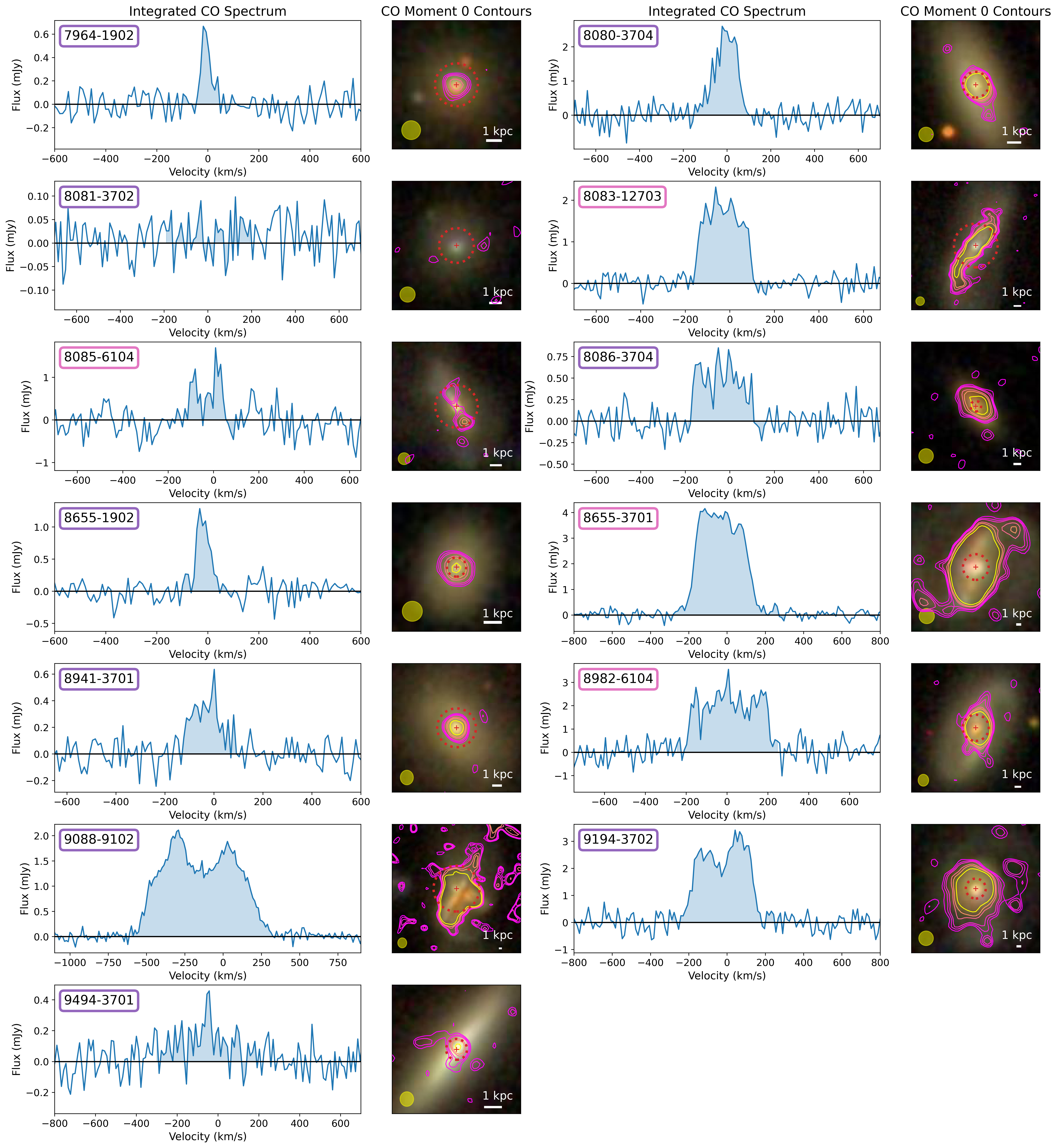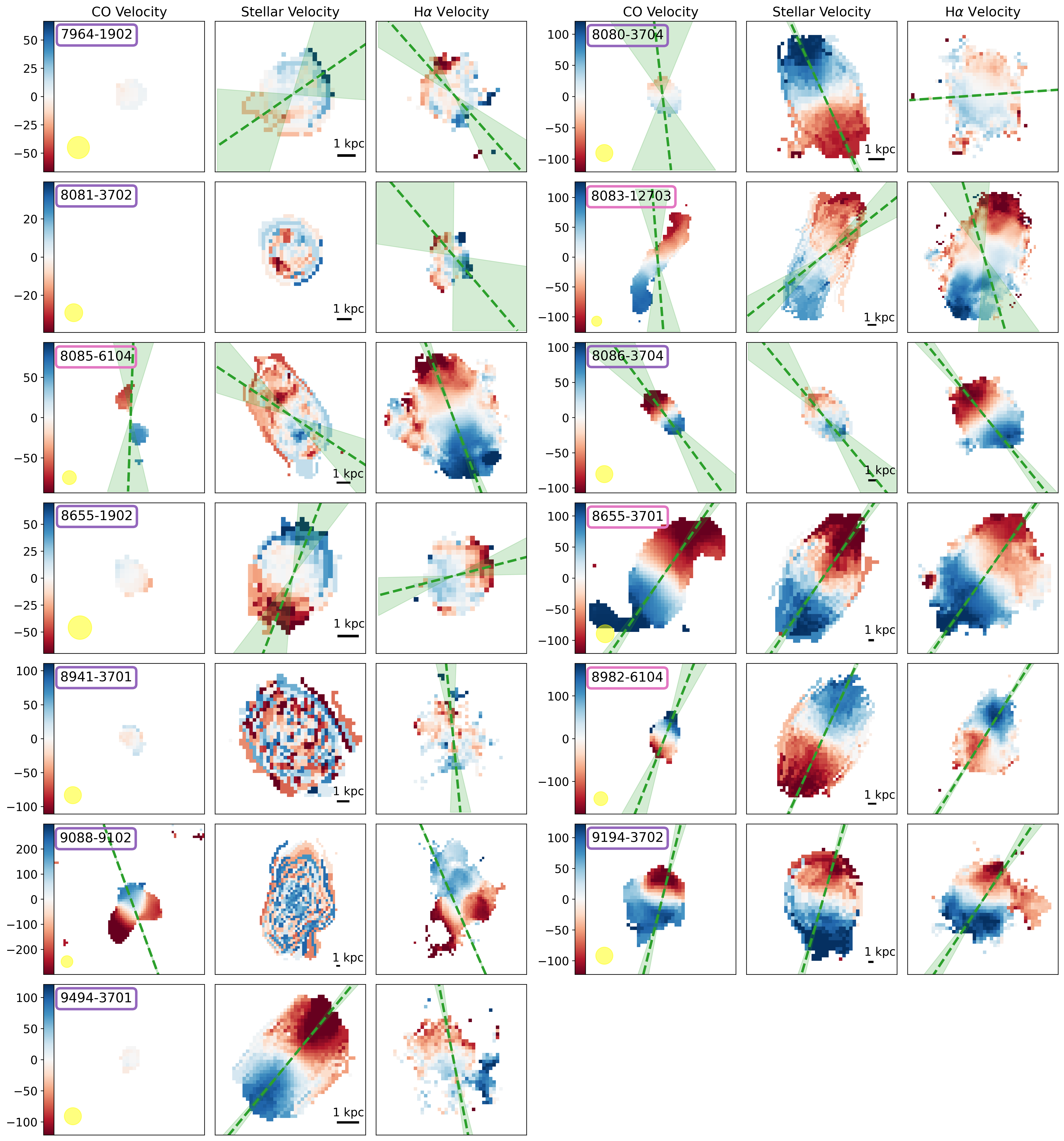Molecular gas properties of post-starburst galaxies
Post-starburst galaxies (PSBs) have rapidly and recently quenched their star-formation, making them an important evolutionary link for how galaxies transform from blue, star-forming spirals to quiescent early-types. The molecular gas is key to understanding the shut-off of star-formation in these galaxies as it is the fuel for star-formation.
It turns out that PSBs typically have significant molecular gas reservoirs, but only a handful have spatially resolved molecular gas observations that can tell us about the morphology and kinematics: both are key for understanding why these gas reservoirs aren’t forming stars.
We have been studying 13 nearby PSBs in the MaNGA survey (an optical integral field spectroscopy survey) with matched-resolution CO(1-0) ALMA observations to try to figure out what the gas is doing in these galaxies and what it might tell us about the quenching mechanisms shutting down star-formation in PSBs.


Overall, we find that the molecular gas in our PSBs is compact and the kinematics are disturbed. This is consistent with a recent merger for just over half of our sample, while other galaxies show signs of outflows and gas disturbance. The central molecular gas clumps have low star-formation efficiencies, indicating that something is stabilizing them against star-formation.
For more information, check out my poster from AAS 240,.
This work has been accepted in ApJ, and is available on arXiv here: https://arxiv.org/abs/2210.12199.